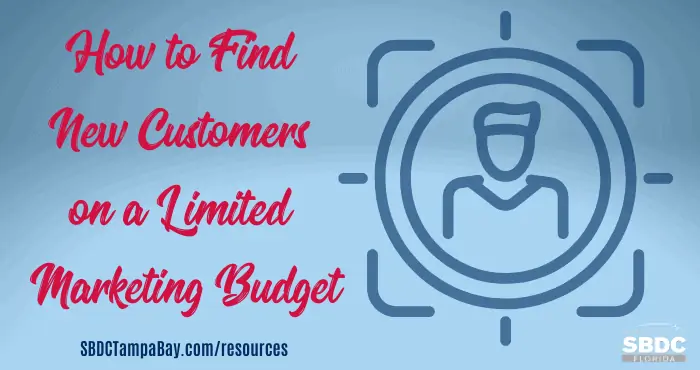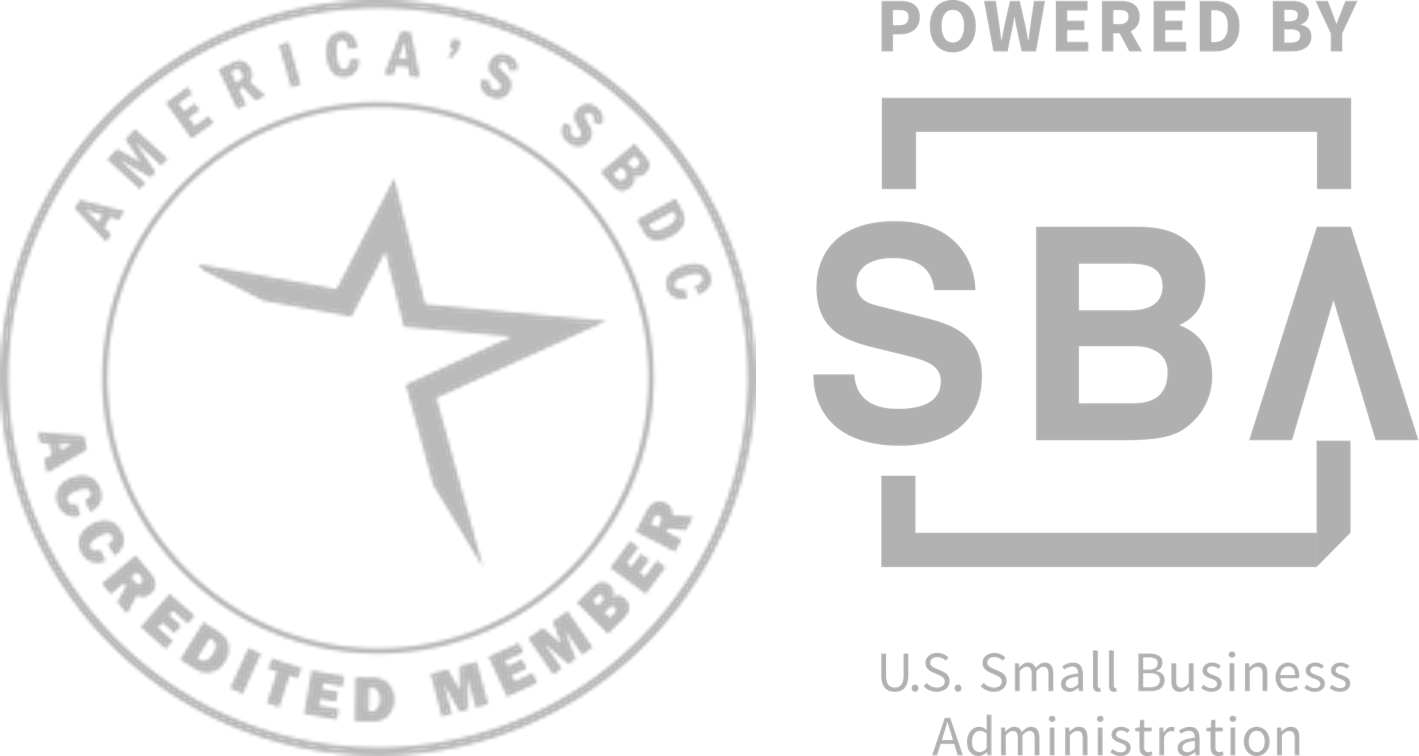How to Find New Customers on a Limited Marketing Budget
by Scott Carpenter | March 29, 2021
Building your business through acquiring new customers is the key to success. While some new sales are organic where new buyers simply find you on their own, most new business is a result of a concentrated effort from businesses to find those buyers.
Yet with this pivotal business function, we hear it almost every day from our clients at the Florida SBDC at USF: “I don’t know how to strategically find more customers with my limited marketing budget to grow sales.”
The key to marketing success for new business isn’t always about what you do externally through random digital ads trying to be all things to all people. Rather, it is often achieved by looking internally first to strategically determine the center of the preferred customer bullseye. In this case, the best source to strategically find your next customers is understanding who your current customers are.
This is accomplished through data mining your customer database to understand their likes, dislikes, preferences and buying habits. This can easily be accomplished through customer surveys.
When most business owners think about customer surveys, most think about simple customer satisfaction questions. But surveys can be designed to learn so much more about your customer group as a whole to create an ideal customer persona – one entity that represents the key traits and behaviors of a large segment of your audience – to make your marketing and sales very targeted in its approach.
The following are sample components of a customer survey you can use to learn about your customers:
Brand
- What drew them to your brand to make them want to buy from you in the first place?
- What top three things are they looking for in a product/service like yours?
- Beyond your price, product or service, what does your brand really provide that makes your customer fulfilled, make their business perform better, etc.?
- What three or four words do they use to describe your business/brand?
- What don’t they like about your brand?
Competition
- Who is your biggest competition with that customer?
- Have them rank your brand with four to five competitors to see where you stand.
- For B2B clients, ask them which competitor frequently markets directly to them and which media they use to do so.
Demographics
- Retail Customer: Age, Gender, Location, Education level, Type of dwelling (house, condo, apartment)
- Business Customer: The above plus Job responsibilities, Purchasing power within the company, Size of business, Type of business, Purchasing cycles
Lifestyle (Personal or Business)
- What are their hobbies, life interests, tastes?
- What are their biggest daily challenges and how does your product/service help them overcome such challenges?
- What motivates them on a personal and professional level?
Media Preferences and Influences
- What are the top three to five methods they use to research new products?
- By name, what magazines, news sites, blogs, social media are they reading to get professional information?
- What media platform influences them the most to make a new purchase?
Digital Engagement
- How many times do they visit your website monthly?
- What type of information is missing from your website to make them visit more frequently?
- Do they view your social media posts?
With the above information, you can determine similar traits and themes of your customers to create one, unified customer persona. As such, Customer Persona graphic could be created to include:
- About Them – A summary of information about them. For B2B it would also include their role, industry, company size, etc.
- Use Case – How they use your product, what they’re trying to achieve with it, etc.
- Previous Solution & Pain Points – A summary of how they were achieving things before your product, and what the pain points of that previous approach were.
- Benefits – A summary of the main benefits they get from using your product.
- Buying Trigger – A summary of what causes them to seek out a product like yours.
- Buying Process – An overview of the typical process people go through to buy your product including where they review information and what influences them the most.
- Choice Factors – An overview of the kind of things they’re looking for in a product like yours…what makes them buy.
Through mining your current customer database, you can learn exactly who they are, how they buy, and what influences them the most. With that information, you now have a guide on how to find new customers just like them in a more strategic, focused and targeted manner.






Scott Carpenter, CME
Carpenter, Consultants, Manatee, SarasotaFlorida SBDC at USF
Specialty: Marketing Branding and Strategy
Scott Carpenter joined the Florida SBDC at USF with a marketing communications and public relations career spanning three decades. Working with brands of all sizes – from EAS Nutrition to DeBartolo Development to Biolife – he was a driving force in creating results, growing brand awareness and enhancing reputations across all customer segments. Experienced in leading national B2C and B2B campaigns to increase profit and loss results through small to multi-million budgets, he led campaigns optimized through advertising (print, digital, broadcast), public relations, direct marketing, and other strategies. For his expertise, the Public Relations Society of America (PRSA) has bestowed upon him the honor of serving as a National Senior Judge for the Silver Anvil Award, the most prestigious communications award in the industry, for 14 consecutive years. In 2019, PRSA named Carpenter to its National Honors & Awards Committee. He is a Certified Marketing Executive.